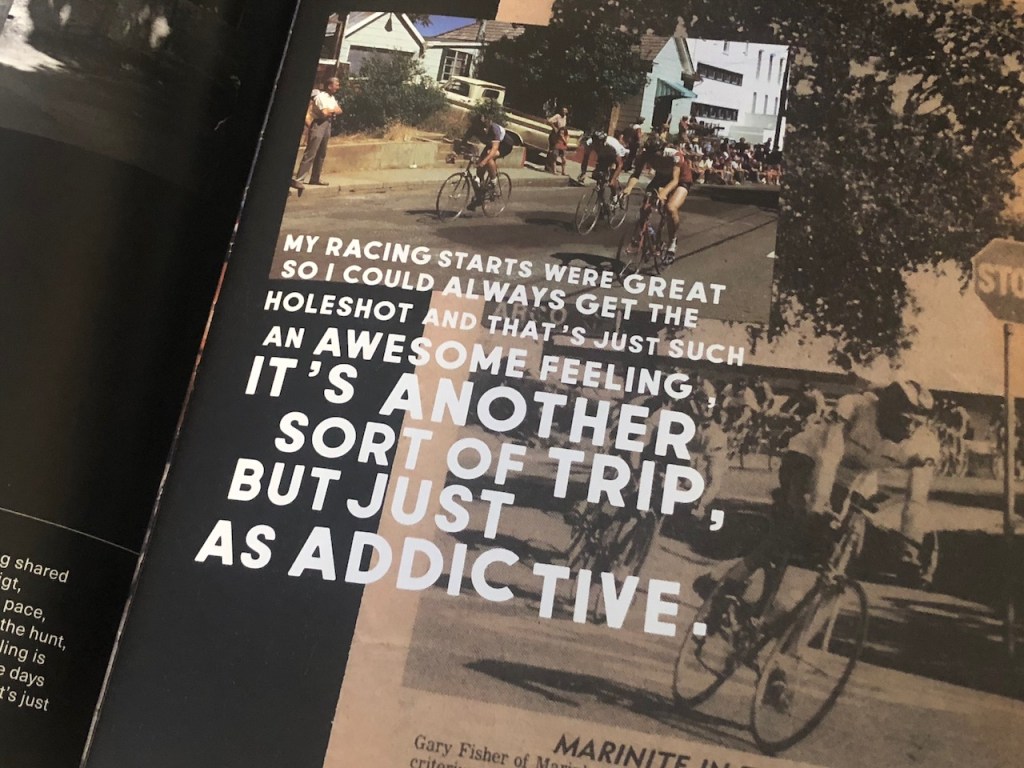This is going to seem rude, but hang with me a moment: There are too damn many pro cyclist biographies. As someone who loves memoir as an art form, clunky biographies that chart the development of an athletic kid into a World Tour race winner leave me cold if only for the reason that there hasn’t been enough life lived for the rider to have developed into a person who sees beyond their own ambition. There’s no real insight about the world.

Which brings me to “Being Gary Fisher and the Bicycle Revolution.” I’m going to assert that 100 years from now, someone writing any sort of history of mountain biking—whether cultural, technological or competitive—will find Fisher to be the single most unavoidable cat in the sport’s history. I honestly wonder what mountain biking would be today without him.
From his early start in cycling as a competitive roadie, to his hippie years hanging out with The Grateful Dead, to his efforts to midwife the birth of mountain biking, to the guy responsible for more technological advances in mountain bikes than any other two people, Fisher is mountain biking’s spirit animal. In that I find a kind of cosmic justice.

To recap: Gary Fisher introduced the following ideas: oversize headsets, wider axles, more powerful brakes, a rear derailleur that sits closer to the wheel so it isn’t damaged so easily, 29-inch wheels, full suspension, four-bar linkage suspension and longer top tubes paired to shorter stems. With most of these the world laughed and then two years later followed his lead. With some of them, like brakes and derailleurs, he got inside other peoples’ heads, like the engineers at Shimano.
We will never see another individual in mountain biking as influential as Fisher.

While the book covers Fisher’s efforts to advance the mountain bike to make it ride better, the book is less about that than it is (to steal a term from winemaking) the particular terroir of Fisher’s development. When you think about the fact that Fisher lived in the Bay Area, was hanging out with a bunch of hippies playing a new kind of music and engaged in a culture that saw cannabis and psychedelics as a way to advance creativity, mountain biking seems less an invention than an inevitability.
Looked at through that lens I can’t help but ask the question: How long would it have taken for mountain bikes to be invented if not for the social movement that led to the Summer of Love? And inverting the question slightly: How could Fisher, Charlie Kelly, Joe Breeze, et al, not have invented mountain bikes given the presence of Mount Tam and their counterculture leanings?

The layout of the book is playful and at times frenetic and while I usually find playing with type as a design element to be yucky (sorry ’bout the technical term), here it helps to lend a sense of the of their view about the possibilities the world held and how fast, if not furious, the ideas came. Also, as an aside, it’s refreshing to read something so self-aware.
It’s a rich book and one that fascinates because it places the birth of mountain biking within the larger context of the 1960s social movement. You might say that it shows why mountain biking was invented by a bunch of hippies rather than experienced bike industry people, but it does so by illustrating what a fertile time it was for fresh ideas.

If the book were to do one thing alone, I’d say that Fisher would want it to confirm what a fantastic device bicycles are. In that, the book is superb.
Being Gary Fisher: the Bicycle Revolution Autobiography, $39.95. Check out Padraig’s interview with Fisher.
Recycling your milk bottles every week will cover a basic monthly subscription to TCI. Or maybe recycle all those beer bottles and subscribe for a year; it supports independent media. We know you love us, so please support us.



The ” longer top tubes paired to shorter stems” deal. Is it that much of a difference on a mountain bike or a road bike?
It’s not something I’d do on a road bike, but on a mountain bike it is a serious changer of games. I had a chance last sprint to ride a mountain bike that had a top tube longer than they used to be, but not as long as they are now. The only time I’ve gone over the bar in the last five years was on that bike.